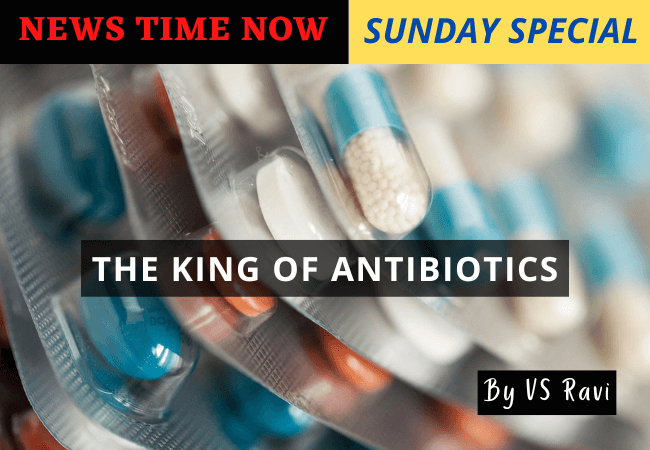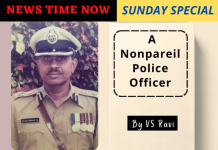Millions of lives have been saved by Penicillin, the first efficient antibiotic, since its introduction during World War II. Penicillin was not only crucial to reducing risk of infection in wound treatment and surgery, it also greatly decreased the mortality of formerly fearsome diseases such as pneumonia. As a potent remedy for syphilis, it was one of two medical advances (the other being the birth control pill) to lead to profound social changes. The overuse and misuse of antibiotics in agriculture as well as medicine, and the development of drug-resistant strains of bacteria, should not obscure its revolutionary significance in man’s successful battle against fatal infectious diseases.
Penicillin which was discovered by and brought remarkable fame to, the Scottish physician Alexander Fleming, is rightly regarded as the “The King of Antibiotics”.
Indeed, following World War II, Fleming became the focus of such adulation as befits movie stars today; he was the recipient of honours galore, including the Nobel Prize.
Alexander Fleming was born on August 6, 1881, in Lochfield, Scotland to Grace Morton and Hugh Fleming, a hardworking, elderly farmer, Alexander’s father died when he was seven, and after elementary school he went to London in 1895 to live with his brothers; there he attended Regent Street Polytechnic for two years, where he excelled. He worked for a time as a clerk, and in 1900 he enlisted with the London Scottish Rifle Volunteers to fight in the Boer War. Although not sent overseas, he remained active in his regiment for many years. At age twenty, after coming into a small inheritance, he entered St.Marys Hospital Medical School, in Paddington, in 1901, where he became a fine student and qualified for a conjoint degree in 1906. Two years later, he took his bachelor’s exams, which he passed with honours receiving his M.B. and M.S. degrees. He also won a gold medal for an essay entitled “The Diagnosis of Acute Bacterial Infection.” In 1909, he qualified as a surgeon.
However rather than practice medicine, Fleming decided upon a career in research, after coming under the influence of Almroth Wright, a well-known professor of pathology at St. Mary’s Hospital. Fleming soon gained respect for his skill and common sense, and he published important papers on such diseases as acne and syphilis. Working before drugs were tested in organised clinical trials, Fleming liked to inoculate himself, and he put together vaccines whenever one of his own family came down ill with any of the simple ailments such as a sore throat or a cold.
During World War I Fleming studied antiseptics. Posted to France, he showed that gangrene and tetanus, which commonly resulted from wounds, were due to organisms found in farmers’ fields which the war had turned to killing grounds. Together with Wright, he demonstrated that the ordinary antiseptics in use at the time were not able to thoroughly penetrate wounded tissue–how, indeed, they reduced the natural antibacterial reaction in blood. He also developed techniques to combat infection. During the war, this work received less attention than it ought, but it was gradually absorbed into standard procedures for cleanliness and treatment. Fleming was disturbed by the human devastation of the war, all the more that so much suffering followed from infections which were in principle preventable or remediable.
During the 1920s Fleming made his major discoveries. In 1921-working with his own nasal secretions while he suffered from a head cold —he discovered lysozyme, a bacteria-destroying enzyme, first in nasal mucus, then in a whole variety of body fluids and other substances. Although this work turned out to be the most important of Fleming’s career up to that time, he was not able to isolate the substance. This was unfortunate, because other researchers were less prone to investigate it. The significance of lysozyme was considerable because it did not destroy living tissue, but this remained unclear for some years. Fleming did publish his results, however, and lysozyme was eventually purified.
In September 1928 Fleming made the greatest discovery in the history of Western medicine and pharmacopeia, the isolation of Penicillin.
Most people are only aware of the popular version of its discovery — a petri dish containing fungus mould had been accidentally left behind in his laboratory by a brilliant scientist. The very next day he noticed that a colony of bacteria adjacent to the petri dish had been wiped out. He had concluded that the bacteria had been destroyed by the fungus mould (penicillin).
What however is not known is that Alexander Fleming had in fact for several years been feverishly searching for some powerful agent or drug that could destroy bacteria without harming human tissue.
All the essential ingredients necessary to pave the way for a major breakthrough had already been there – a brilliant scientist, who was searching for an agent that could destroy bacteria, a well-equipped laboratory and a proper academic atmosphere. However, what most people would not know and therefore cannot appreciate (as rightly observed by the great immunologist Medawar) is the fact that penicillin, unlike other antibiotics, destroys bacteria by interfering with a process peculiar to bacteria — the synthesis of the structural element of the bacterial cell-wall.
The non-formation of the cell wall increases the internal pressure to such an extent that the bacterium, which is multiplying, bursts like a balloon which cannot expand further. The cells in the human body contain only membranes and not walls — hence they are protected from damage. Other antibiotics, unlike Penicillin, are harmful to human tissue as they act by interfering with the metabolic processes that bacteria have in common with other organisms.In other words, they would not have satisfied Fleming’s twin criteria. Thus Fleming was lucky on two counts.
The term “penicillin” is defined as the natural product of Penicillium mould with antimicrobial activity. It was coined by Alexander Fleming on 7 March 1929 when he discovered the antibacterial property of Penicillium rubens. Fleming explained in his 1929 paper in the British Journal of Experimental Pathology that “to avoid the repetition of the rather cumbersome phrase ‘Mould broth filtrate’, the name ‘penicillin’ will be used.” The name thus refers to the scientific name of the mould, as described by Fleming in his Nobel lecture in 1945:
The crucial work in the development of penicillin as a drug was undertaken in the shadow of World War Il by Howard Walter Corey and Ernst Boris Chain. Beginning in 1938, Florey and Chain began to test penicillin as part of a larger effort to find natural antibacterial agents. By 1939 it was clear that the potential for penicillin was great. Over the next two years it was tested, and the first clinical trials were completed in mid-1941. World War 11 provided more than sufficient casualties to test the drugs worth, and large-scale manufacture began in England and the United States.
Given the disastrous effects of infection in previous warfare (which had become extremely bloody in the nineteenth and twentieth centuries), the huge public admiration of penicillin is fully understandable. Fleming was treated with veneration by the scientific community and the general public. Even during the war he became the object of adulation. He was elected to the Royal Society in 1943 and knighted in 1944. In 1945 he shared the Nobel Prize with Chain and Florey.
Until the end of his life, Fleming remained a figure of tremendous renown.
Fleming was comfortable with his celebrity, which lasted until the end of his life.
The discovery of penicillin changed the world of medicine enormously. With its development, infections that were previously severe and often fatal, like bacterial endocarditis, bacterial meningitis and pneumococcal pneumonia, could be easily treated. Even dating all the way back to World War II and today with the wars in Iraq and Ukraine, soldiers experience injuries that would have been fatal without penicillin and other antibiotics. It is really impossible to imagine what the world would be like without penicillin.
There were initially treatments for pneumococcal pneumonia in the 1930s with antisera and sulfonamides, but use of these treatments quickly came to a halt, and everyone began using penicillin. This quickly led to a number of pharmaceutical industries beginning to screen a variety of other natural products for antibacterial activity, which led to a whole host of new antibiotics, such as streptomycin, aminoglycosides, tetracycline and the like. Penicillin clearly led the way in that development. Penicillium mould, was one of the first and still is one of the most widely used antibiotic agents to this day. Its discovery was a momentous event for humanity, signalling the dawn of the antibiotic age. Before then, there was no cure for infections such as gonorrhoea, blood poisoning, meningitis, pneumonia, or rheumatic fever. It’s estimated that to date, it’s saved over 200 million lives.
It occupies a pride of place on the World Health Organisation’s List of Essential Medicines.Today there is no drugstore in the world that does not sell Penicillin, and no hospital that does not use penicillin for treatment,
It is interesting that using penicillin for the treatment of infections like pneumococcal pneumonia and bacterial endocarditis never had a randomised controlled trial because the difference with treatment was so clearly apparent that no one even thought of doing a randomised controlled study:
Penicillin, one of the oldest known antibiotics to humankind, is set to make a comeback in India. The current dispensation is planning to revive its manufacture, five years after it went out of production due to unrealistic price controls.
The decision was taken after doctors across the country made a request the for the procurement of this crucial antibiotic critical to preventing Strep A bacterial infection — which can lead to serious complications such as rheumatic fever and rheumatic heart disease if left untreated.
Fleming and Sarah Marion McElroy whom he married. in 1915, had one son. After her death in 1949, he married Amalia Voureka . On March 11, 1955, he was to have dinner with the famous actor Douglas Fairbanks Jr. and Eleanor Roosevelt. Till that morning, Fleming, though under the weather refused to see a doctor. When his wife found him in bed, he asked if she would comb his hair. He was in a cold sweat, with a pain in his chest, but believed that nothing was the matter with his heart. The man whose discovery had saved millions of lives all over the world then bowed his head and died. He was mourned the world over and is buried in St. Paul’s Cathedral in London.


















































